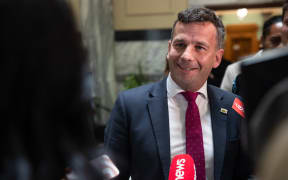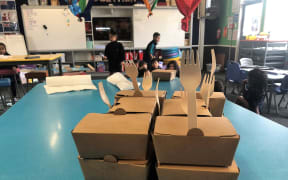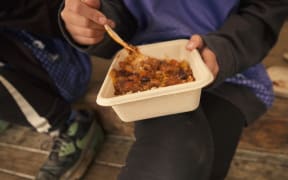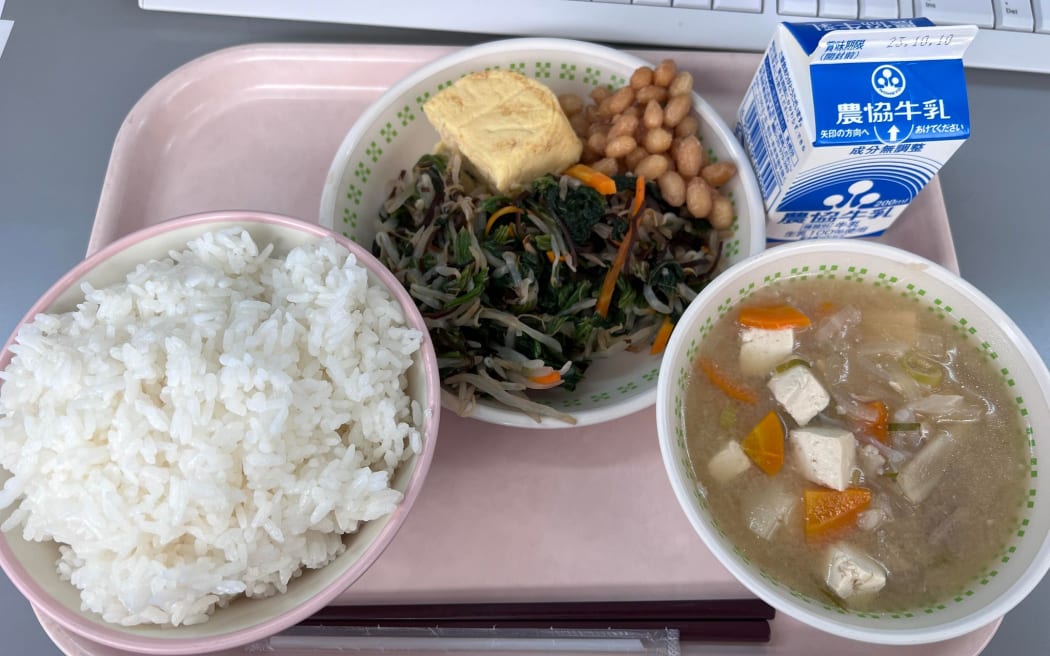
A meal from Kyuushoku (the Japanese school lunch programme), featuring tofu miso soup, rice, vegetables and nato beans. Photo: Supplied / Rayven Aledo
Couscous and sandwiches, stew and pasta salads, miso soup and tteokbokki; countries around the world vary in the ways they provide school lunches, from universally free, to income-based, to no standard system at all.
The New Zealand government has proposed a full redesign of the school lunch programme to be crafted over the next two years.
Ka Ora, Ka Ako, the current lunch programme targets the top 25 percent of students facing the biggest economic barriers. This is determined via the Equity Index, which replaced the decile system.
Just under 1000 schools participate in the programme, accounting for 40 percent of all Kiwi schools and 27 percent of all students.
Before the new programme was introduced, the government was looking to cut costs over the next two years, allocating $480 million to the scheme, which will fund 10,000 pre-schoolers but also result in a menu change from hot dishes to fruit, muesli bars and sandwiches.
RNZ looks at how other countries deliver school lunches for their students.
Free school lunches for all
Finland became the first country to provide free school meals to every child between the ages of 6 and 16 in 1948. Sweden followed suit, serving free meals to children aged 7 to 16, a scheme enshrined in legislation since 1997. There was no specific targeting based on family income, rather, meals were universally free.
South Korea recently introduced the initiative in the last decade, expanding the programme where it was offered in just one province in 2011 to the entire country. A national referendum was held on the scheme and now free lunches are provided to all students from kindergarten through high school.
The central government covers around 67 percent of the cost, and local governments pay for the rest. In 2022, South Korea's Ministry of Education allocated around 7.53 trillion won (NZ$9 billion) to the school meal budget, which included the service's operation costs, nutritionists, ingredients and equipment.
Portion sizes were based on students's ages to provide the appropriate calories. Meals included dishes such as noodles, stir-fried meat, suyuk (simmered pork), tteokbokki (rice cakes cooked in a spicy sauce) and bibimbap (rice with vegetables), which provide protein, vitamins A and C, and riboflavin or vitamin B2.
All three countries believe children should have access to healthy food and be encouraged to build healthy eating habits without having to pay.
National school lunch programme
The Japanese school lunch program, called kyuushoku (給食), is often cited as one of the most successful international examples, ensuring the nation's students receive a nutritious and well-balanced meal daily.
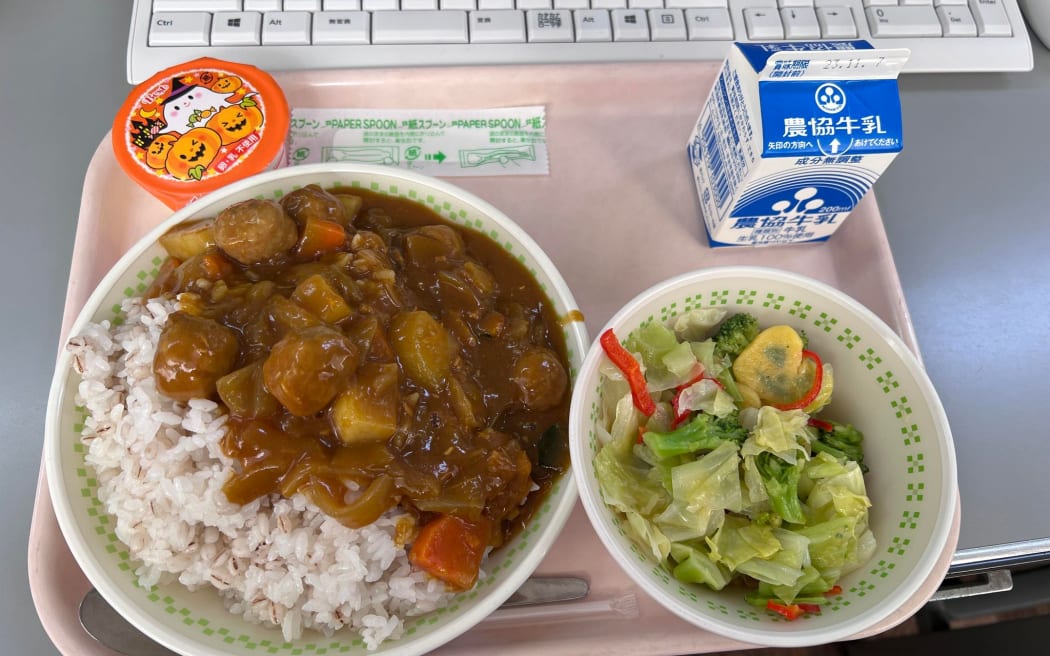
Japanese curry, salad and milk as part of Kyuushoku (the Japanese school lunch programme). Photo: Supplied / Rayven Aledo
It was said to have been created in the late 1800s with schools serving low-income students. Now, every school student of primary age in Japan, and their teachers, received lunch.
The programme was not free, rather it was estimated to cost parents around ¥49,000 ($522 NZD) in 2022 for a year of meals for primary-age students. Near the end of 2023, Prime Minister Fumio Kishida began considering universal free lunches.
While this discussion was taking place, many municipalities were taking the decision into their own hands, for example, most of Tokyo's wards have policies where school lunch is free in some form.
In Japan, school lunches are eaten as a community. Nutritionists create the meals, which are then cooked onsite by school staff. Meals feature items from each major food group. There is a hearty portion of rice, soup, vegetables and a serving of meat or fish, alongside a carton of milk. The meals reflect what is seasonally available.
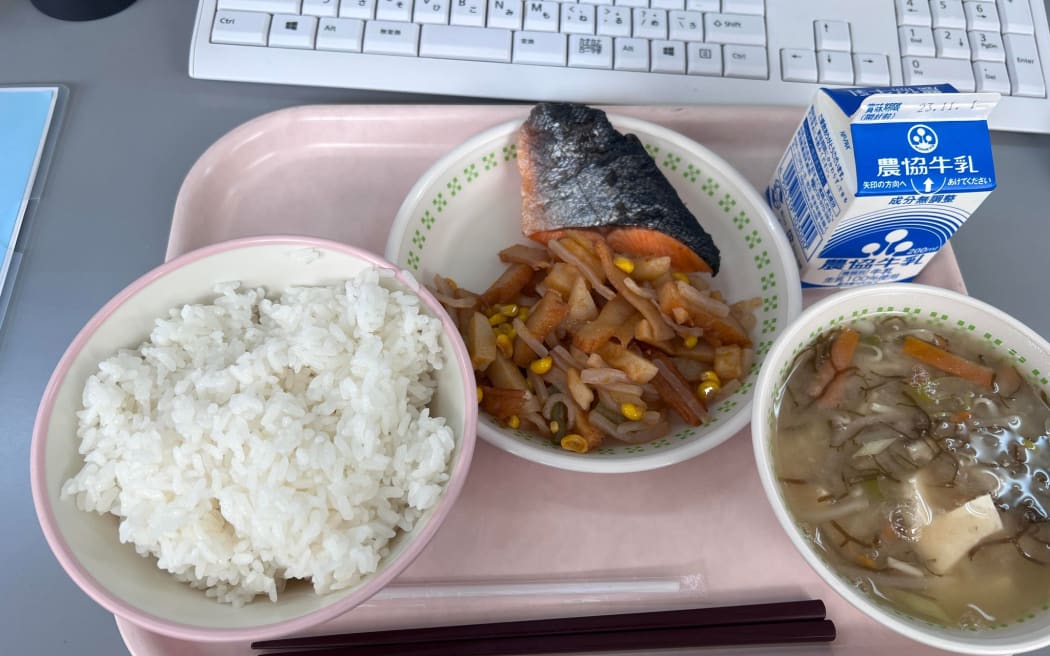
Salmon is included in a meal from Kyuushoku (the Japanese school lunch programme). Photo: Supplied / Rayven Aledo
Occasionally students may receive a special sweet dessert or the food is designed with a theme reflecting a special holiday or time of the year. For example, during Japan's Star Festival, the vegetables are shaped into stars.
Student participation in the lunch is another important aspect of Japan's school lunch programme. Most Japanese schools do not have a special cafeteria space so students will eat in their homerooms.
Students are encouraged to eat everything on their plates and are welcome to have second helpings. They also take part in a rotating lunch duty schedule, where they help with serving the food via a cart to the classrooms and then contribute to cleaning up.
School lunches provided based on income
England has a similar programme to New Zealand, in that free school meals are not provided universally, but are provided for children at all schooling levels whose families receive certain benefits or meet an income threshold.
The United States has the National School Lunch Programme, created under President Harry Truman in 1946. This provides government-funded meals free or at a reduced-price to children in public and non-profit schools and residential child care. Children are eligible based on whether their parents meet specific household income guidelines, receive benefits, or are in foster care.
No national program
Australia does not have any national school meals program. However, a parliamentary committee recently set out to consider the benefits of having one, including offering free meals to students from low-income families. The government was expected to respond to the committee's recommendations later this year.
Non-governmental organisations, such as Eat Up Australia, work behind the scenes to advocate and provide school lunches where they can, preparing food off-site by volunteers.
Australia, Canada and Denmark are among the only high-income countries in the world that do not provide school meals.
